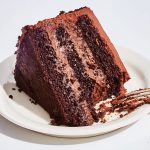Wallpaper is a durable and fashionable alternative for interior design over time. But as technology advances, so do the approaches and resources at our disposal. Spray adhesive is one such breakthrough.
But is spray adhesive suitable for use with wallpaper? We’ll explore the worlds of wallpapering and spray adhesive in this guide to see if they go well together.
Knowledge of Spray Adhesive
Spray adhesive, a glue in an aerosol can, is renowned for its practicality and simplicity. It is frequently employed in various do-it-yourself projects, crafts, and formal contexts.
Spray adhesives come in diverse types: temporary, repositionable, and permanent. Each offering unique bonding traits. This assortment caters to different project needs and preferences.
The Customary Wallpapering Method
When hanging wallpaper, the adhesive is usually applied directly to the wallpaper or the wall. Ensuring even adhesive distribution is crucial to prevent bubbles and wrinkles during application. After excess adhesive removal, the wallpaper is carefully smoothed onto the wall.
Wallpaper Adhesive Spray Use
Spray glue is a different approach from the conventional one. Adhesive can be sprayed directly onto wallpaper or walls rather than dispersed across them. This might save you time and effort, particularly for complex or huge patterns. However, variables like the type of wallpaper and adhesive used affect how well spray adhesive works with wallpaper.
Wallpapers that work with spray adhesive
Spray glue has varying effectiveness depending on the type of wallpaper. Vinyl, for example, works well due to its durability and moisture resistance. Non-woven wallpapers go well with spray adhesive. This is because they are user-friendly and allow for flexibility during installation.
Before Using Spray Adhesive, Take into Account
There are a few vital factors to take into account when utilizing spray adhesive for wallpaper:
Surface Preparation:
The wall surface should be clear of trash and any existing wallpaper. It should also be smooth and clean.
Type of Wallpaper:
As was already noted, not all wallpaper kinds are compatible with spray adhesive. Verify the manufacturer’s instructions at all times.
Testing:
Before applying adhesive to the entire wallpaper, conduct a small compatibility test area. This step ensures that the desired outcomes will be achieved. And without any unexpected issues during application.
Coverage:
Pay close attention to the adhesive can’s designated coverage area. Inadequate bonding may result from insufficient covering.
How to Apply Spray Adhesive on Wallpaper in Steps
Gather your supplies, including wallpaper, spray glue, and any other tools you might need.
Application of Spray glue:
Hold the can of spray glue about 6 to 8 inches away from the wall and coat evenly. Avoid using too much spray.
Placement of Wallpaper:
Apply the wallpaper with caution to the wall that has been covered in glue. Smooth out any bubbles or wrinkles as you gently press the wallpaper into place, starting at the top.
Adjustments:
Repositioning is possible using spray glue within a given time limit, which is one benefit. This means that modifications can be made if the wallpaper isn’t aligned.
Complete Application:
Continue to apply the wallpaper by sections, aligning it seamlessly.
Drying Time:
Permit the glue to dry as directed by the manufacturer. This is necessary for a strong bond.
Trimming:
Use a sharp utility knife to remove any excess wallpaper after properly adhering and drying.
The Benefits and Drawbacks of Spray Adhesive
Like any method, using spray adhesive for wallpaper has advantages and disadvantages.
Pros:
Saving time:
Spray adhesive can speed up application, particularly for bigger areas.
Repositioning:
Many spray adhesives provide a window of opportunity for modifications, assuring precise alignment.
Minimal Mess:
Spray adhesive is less likely to make a mess than traditional adhesive applications.
Cons:
Not all wallpapers are compatible with spray adhesive, which is a compatibility concern. For other varieties, you might have to stay with conventional techniques.
Spray glue can leave behind a residue if it is not used correctly and applied to the wallpaper’s surface.
FAQs
Can you use spray adhesive to hang wallpaper?
Indeed, spray adhesive is suitable for wallpaper hanging. Then particularly with vinyl and non-woven types. Adequate surface prep and prior testing are crucial steps for success.
Does spray adhesive damage paper?
Spray adhesive can damage paper if not applied correctly. Careful application, proper surface preparation, and selecting the right adhesive type for the paper are important to avoid damage.
Will spray adhesive damage walls?
When used appropriately, spray adhesive is unlikely to damage walls. However, improper application or using excessive adhesive can lead to issues. Always follow instructions and conduct tests before full application.
Conclusion
In conclusion, spray adhesive can be a practical choice for wallpaper, especially for some varieties. It provides ease and could shorten the application procedure. However, paying close attention to details like the wallpaper is important. The adhesive being used, as well as using the right application methods. Before committing to the whole project, remember that testing on a tiny piece is essential.








